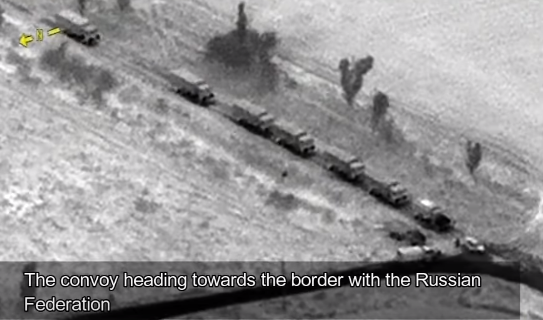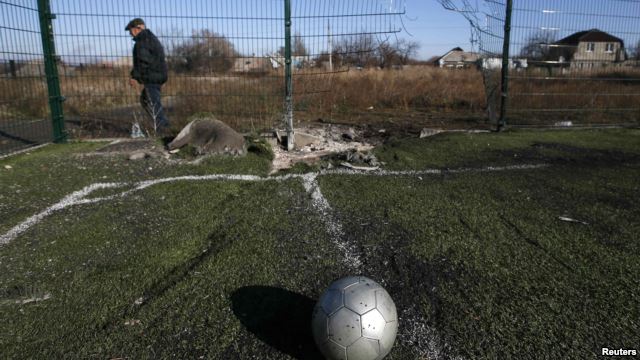The OSCE SMM which observes the implementation of the Minsk agreements in Ukraine's Donbas region has spotted a convoy of trucks entering and exiting the non-government controlled areas of Donbas through the operation of a UAV during the night.
The findings were released in its report on 9 August. The SMM wrote that the UAV spotted two convoys of trucks entering and exiting Ukraine via a dirt track where there are no border crossing facilities in the middle of the night.
The first convoy consisting of eight trucks was spotted on 22:15 on 7 August. It travelled east along a road 62 km east of Donetsk on non-government controlled territory until it turned onto a dirt track where it met with a convoy of six cargo trucks and a box body truck travelling from the border with the Russian Federation. At 23:25, the first convoy exited Ukraine through the dirt track.
This is not the first time that the OSCE has spotted military equipment and personnel travelling from Russia to the so-called Luhansk and Donetsk "People's Republics" which in Ukraine, which are effectively under Russia's control. However, to our knowledge, this is the first time that the OSCE SMM has spotted such travels during the night and on a dirt road. Previously, the observations were made at the two (out of eleven) checkpoints to which it has access - Donetsk and Gukovo.
On 17 November 2016, US Ambassador Daniel Baer told
the OSCE Permanent Council in Vienna that the Special Monitoring Mission to Ukraine had observed 30,000 individuals in military-style dress crossing from Russia to Ukraine at the two checkpoints to which the OSCE has access. However, he noted that the OSCE's scope in monitoring the border is extremely limited, telling that the OSCE is present on the Ukrainian side of its internationally-recognized border with Russia less than 0.1% of the time, not being able to visit, on average, more than a single border crossing per day and having only 33 minutes during daylight to observe.
“Because it takes SMM patrols more than three hours to drive to the border, monitors must drive past numerous separatist checkpoints, giving combined Russian-separatist forces plenty of time to ensure there is nothing of consequence for the SMM to see once it arrives at the Ukrainian border with Russia,” Baer claimed at the time.
On the Russian side of the border, Russia has refused to enable the Observer Mission to fully discharge its mandate, “especially when it comes to detection of people in military-style outfits in vehicles or during unfavorable meteorological conditions.” Russia has claimed that the Observer Mission is a “goodwill gesture” and not one of its Minsk commitments.
The OSCE SMM does not carry out its mission during the night, but instead uses UAV's with night vision. These drones have been targeted by the Russian-separatist forces operating on the non-government controlled territory (ORDLO).

The September 2014 Minsk Protocol provides that the Russian Federation commits to ensuring the permanent monitoring of the Ukrainian-Russian border and verification by the OSCE, yet Russia has rejected its obligation to expand the geographic scope of the OSCE Observer Mission, which remains limited to two out of eleven checkpoints on the border between Russia and separatist-held parts of Ukraine.
Russia has denied that it supports the so-called separatist forces of ORDLO with personnel and equipment. However, open-source sleuths have identified
over 1300 Russian soldiers, 89 Russian military brigades, and 44 types of military hardware produced only in the Russian Federation taking part in the fighting against Ukrainian government forces in Donbas. Thanks to this report by the OSCE, we now have a clearer understanding of how exactly Russia gets its military support to the "separatists" it effectively controls, contributing to the neverending fighting which prevents establishing peace in eastern Ukraine.
Read also:
- OSCE observes 30,000 military-clad persons crossing from Russia to Ukraine
- OSCE SMM deputy chief on why expectations of them are too high
- OSCE admitted its monitoring in Donbas is very limited
- First casualties of OSCE mission in Donbas: land mine blast kills one, injures another
- Russia's involvement in Donbas war open secret in Donetsk
- Russian participation in the war in Donbas: evidence from 2017
- Ukrainian OSINT sleuths release largest existing database of evidence of Russian aggression in Ukraine





